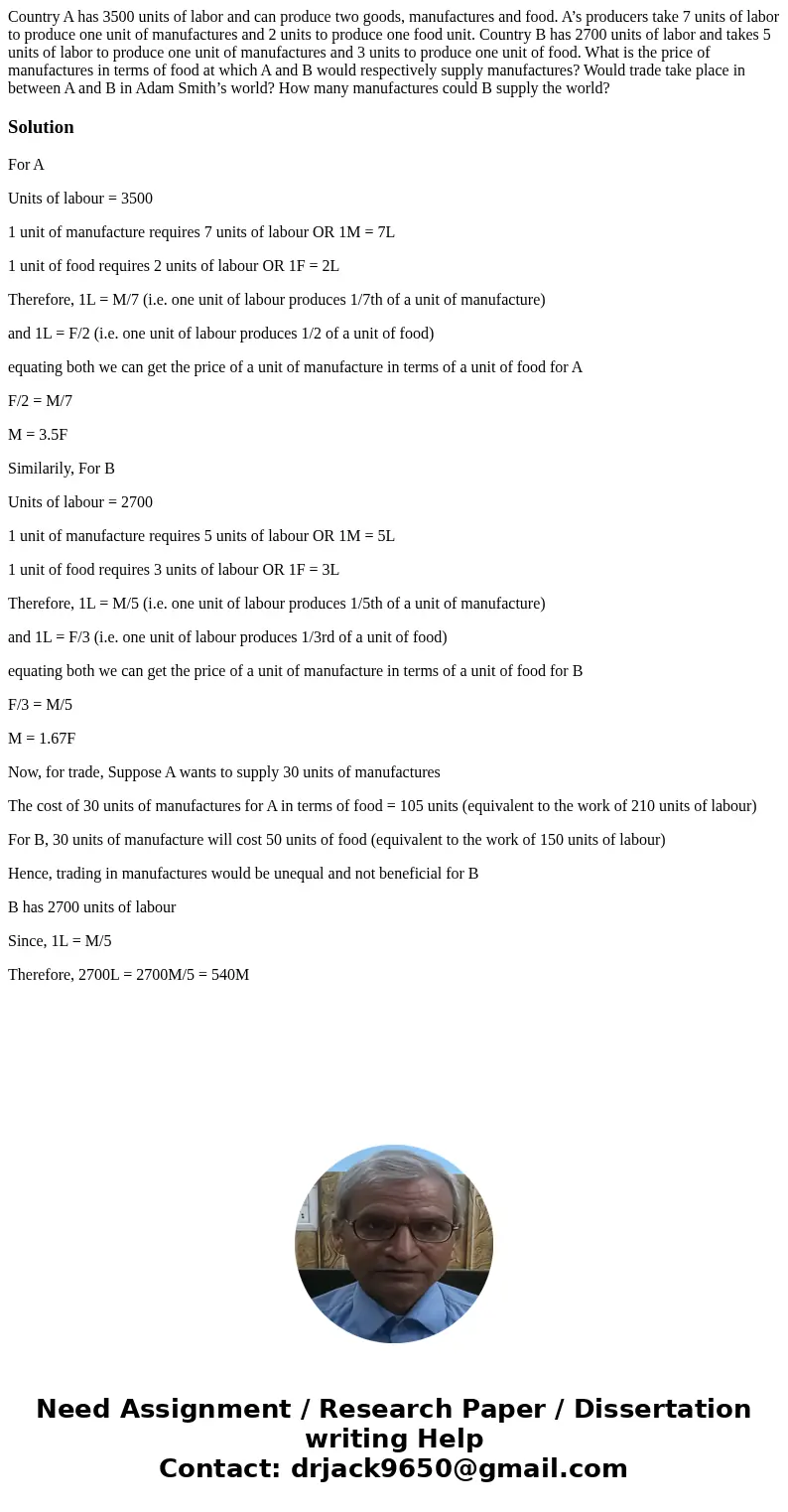Country A has 3500 units of labor and can produce two goods
Country A has 3500 units of labor and can produce two goods, manufactures and food. A’s producers take 7 units of labor to produce one unit of manufactures and 2 units to produce one food unit. Country B has 2700 units of labor and takes 5 units of labor to produce one unit of manufactures and 3 units to produce one unit of food. What is the price of manufactures in terms of food at which A and B would respectively supply manufactures? Would trade take place in between A and B in Adam Smith’s world? How many manufactures could B supply the world?
Solution
For A
Units of labour = 3500
1 unit of manufacture requires 7 units of labour OR 1M = 7L
1 unit of food requires 2 units of labour OR 1F = 2L
Therefore, 1L = M/7 (i.e. one unit of labour produces 1/7th of a unit of manufacture)
and 1L = F/2 (i.e. one unit of labour produces 1/2 of a unit of food)
equating both we can get the price of a unit of manufacture in terms of a unit of food for A
F/2 = M/7
M = 3.5F
Similarily, For B
Units of labour = 2700
1 unit of manufacture requires 5 units of labour OR 1M = 5L
1 unit of food requires 3 units of labour OR 1F = 3L
Therefore, 1L = M/5 (i.e. one unit of labour produces 1/5th of a unit of manufacture)
and 1L = F/3 (i.e. one unit of labour produces 1/3rd of a unit of food)
equating both we can get the price of a unit of manufacture in terms of a unit of food for B
F/3 = M/5
M = 1.67F
Now, for trade, Suppose A wants to supply 30 units of manufactures
The cost of 30 units of manufactures for A in terms of food = 105 units (equivalent to the work of 210 units of labour)
For B, 30 units of manufacture will cost 50 units of food (equivalent to the work of 150 units of labour)
Hence, trading in manufactures would be unequal and not beneficial for B
B has 2700 units of labour
Since, 1L = M/5
Therefore, 2700L = 2700M/5 = 540M

 Homework Sourse
Homework Sourse